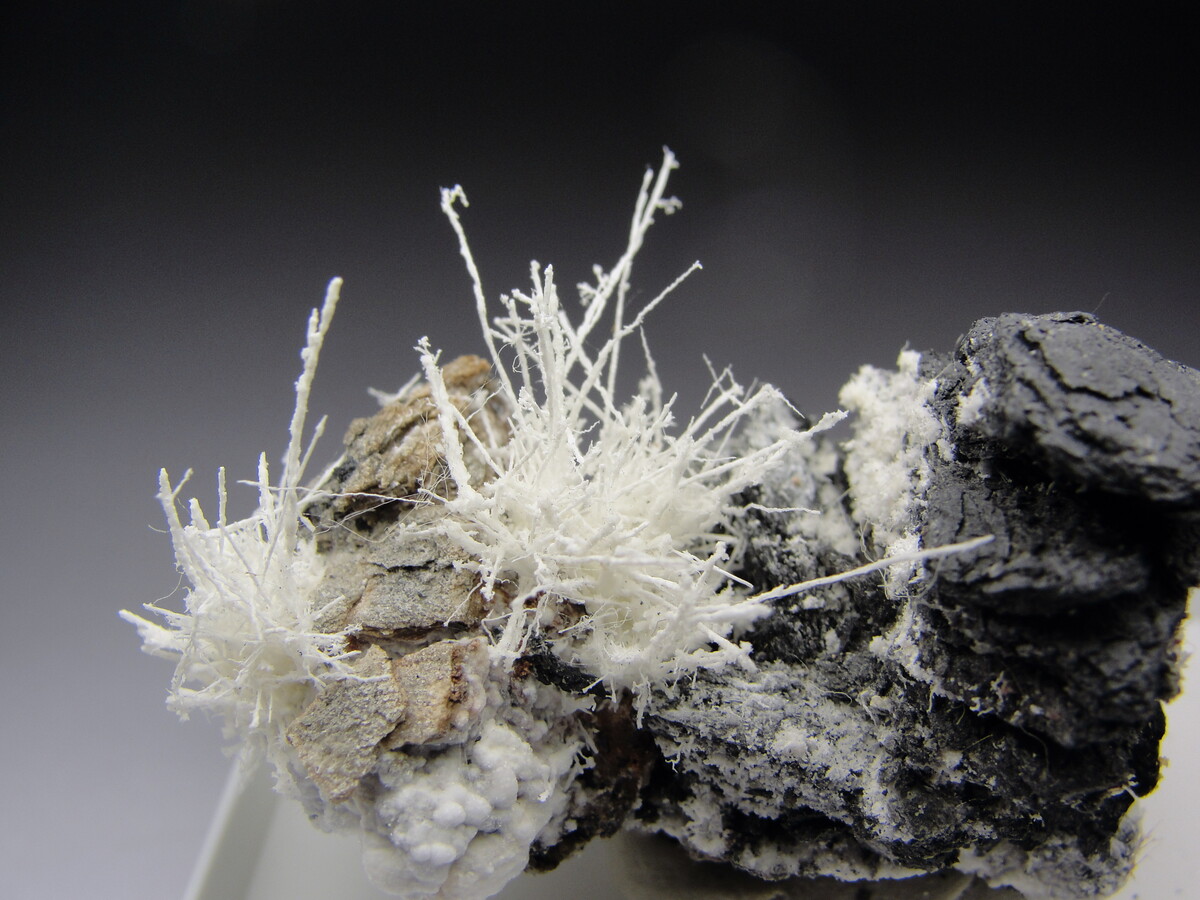
What is Mascagnite? Mascagnite, also known as ammonium sulfate, is a naturally occurring mineral with a unique chemical composition. Found in volcanic fumaroles and guano deposits, this mineral has a fascinating history and a variety of uses. Its chemical formula, (NH4)2SO4, makes it a vital component in fertilizers, providing essential nutrients to plants. Beyond agriculture, Mascagnite plays a role in water purification, food additives, and even in the textile industry. Its crystalline structure can vary, often appearing as white or colorless crystals. Understanding Mascagnite not only sheds light on its practical applications but also its geological significance. Let's dive into 30 intriguing facts about this versatile mineral!
Key Takeaways:
- Mascagnite, also known as ammonium sulfate, is a versatile mineral used in fertilizers, food additives, and fireproofing materials. Its unique properties and historical significance make it a fascinating subject for study.
- From forming intricate crystals to contributing to agricultural advancements, mascagnite has a rich history and diverse applications. However, its use requires careful consideration to minimize environmental impact and ensure sustainable practices.
What is Mascagnite?
Mascagnite, also known as ammonium sulfate, is a fascinating mineral with a variety of uses and interesting properties. Let's dive into some intriguing facts about this compound.
-
Chemical Formula: Mascagnite's chemical formula is (NH4)2SO4, which means it consists of ammonium and sulfate ions.
-
Discovery: Named after the Italian chemist Paolo Mascagni, who first identified it in the early 19th century.
-
Appearance: Typically appears as colorless or white crystals, though impurities can give it a yellowish tint.
-
Solubility: Highly soluble in water, making it useful in various industrial applications.
-
Natural Occurrence: Found in volcanic fumaroles, where it forms from the condensation of volcanic gases.
-
Synthetic Production: Commonly produced by reacting ammonia with sulfuric acid.
Uses of Mascagnite
Mascagnite has a wide range of applications, from agriculture to industry. Here are some of its most common uses.
-
Fertilizer: Widely used as a nitrogen fertilizer in agriculture due to its high nutrient content.
-
Food Additive: Sometimes used as a food additive to regulate acidity and improve dough strength in baking.
-
Flame Retardant: Employed in fireproofing materials due to its ability to reduce flammability.
-
Water Treatment: Utilized in water treatment processes to remove impurities and improve water quality.
-
Pharmaceuticals: Used in the pharmaceutical industry as an ingredient in certain medications.
-
Textile Industry: Helps in dyeing and printing processes by acting as a mordant.
Physical and Chemical Properties
Mascagnite's unique properties make it valuable in various fields. Let's explore some of these characteristics.
-
Melting Point: Has a melting point of 235°C (455°F), which is relatively high for a salt.
-
Density: Its density is about 1.77 g/cm³, making it denser than many other common salts.
-
Hygroscopic Nature: Absorbs moisture from the air, which can affect its storage and handling.
-
pH Level: Aqueous solutions of mascagnite are slightly acidic, with a pH around 5.5.
-
Thermal Stability: Decomposes at high temperatures, releasing ammonia and sulfur dioxide gases.
-
Reactivity: Reacts with strong bases to form ammonia gas and with strong acids to form sulfuric acid.
Environmental Impact
Mascagnite's use and production can have various environmental effects. Here are some key points to consider.
-
Soil Health: Overuse as a fertilizer can lead to soil acidification, affecting plant growth.
-
Water Pollution: Runoff from agricultural fields can contaminate water bodies, leading to eutrophication.
-
Air Quality: Production processes can release ammonia and sulfur dioxide, contributing to air pollution.
-
Waste Management: Proper disposal is crucial to prevent environmental contamination.
-
Sustainable Practices: Using mascagnite in moderation and following best practices can mitigate its environmental impact.
Historical Significance
Mascagnite has played a role in various historical contexts. Here are some interesting historical facts.
-
Early Uses: Used in ancient times for medicinal purposes and as a fertilizer.
-
Industrial Revolution: Its production and use increased significantly during the Industrial Revolution.
-
Scientific Research: Studied extensively by early chemists, contributing to the development of modern chemistry.
-
Agricultural Advancements: Helped boost agricultural productivity in the 20th century.
Fun and Lesser-Known Facts
Here are some fun and lesser-known facts about mascagnite that you might find surprising.
-
Crystal Formation: Can form beautiful, intricate crystal structures under the right conditions.
-
Volcanic Landscapes: Often found in volcanic regions, adding to the unique mineral diversity of these areas.
-
Educational Tool: Used in chemistry education to demonstrate various chemical reactions and properties.
Final Thoughts on Mascagnite
Mascagnite, or ammonium sulfate, is more than just a chemical compound. Its role in agriculture, food processing, and even fireproofing highlights its versatility. Farmers rely on it to boost crop yields, while the food industry uses it to enhance flavors. Its fire-retardant properties make it invaluable in safety applications.
Understanding these facts about mascagnite can deepen your appreciation for this compound's impact on daily life. From improving the food we eat to protecting our homes, mascagnite plays a crucial role. Next time you see lush crops or enjoy a tasty snack, remember the unseen hero behind the scenes.
Learning about such compounds reminds us of the intricate connections in our world. Keep exploring and stay curious—there's always more to uncover about the substances that shape our lives.
Frequently Asked Questions
Was this page helpful?
Our commitment to delivering trustworthy and engaging content is at the heart of what we do. Each fact on our site is contributed by real users like you, bringing a wealth of diverse insights and information. To ensure the highest standards of accuracy and reliability, our dedicated editors meticulously review each submission. This process guarantees that the facts we share are not only fascinating but also credible. Trust in our commitment to quality and authenticity as you explore and learn with us.
